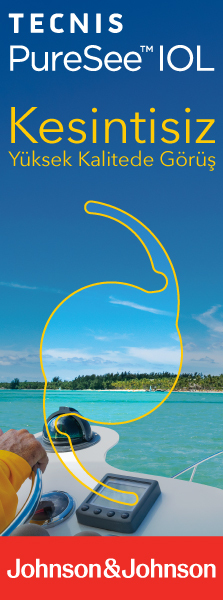2M.D. Asistant Professor, Recep Tayyip Erdogan University, Department of Neurology, Rize/TURKEY
3M.D. Professor, Recep Tayyip Erdogan University, Department of Ophthalmology, Rize/TURKEY Purpose: To examine the retinal nerve fiber layer (RNFL) thickness by using spectral domain optical coherence tomography (OCT) in newly diagnosed and treatment-naive multiple sclerosis (MS) patients without a history of optic neuritis.
Material and Methods: This prospective study included the newly diagnosed 30 eyes of 15 MS patients and 30 eyes of 15 healthy individuals as the control. Peripapillary RNFL thickness was measured in each eye with spectral domain OCT as an average (3600) and by quadrants (superior, nasal, inferior and temporal). Mean RNFL values were compared with the control group. Statistical analysis was carried out using Student's t test.
Results: Mean average RNFL thickness was 86. 4±15.4 μm in the MS group and 98.0±9.1 μm in the control group (p<0.05). When evaluated by quadrants, the decrease in the RNFL was statistically significant in the temporal and inferior quadrants in the MS group (p<0.05).
Conclusion: Spectral domain OCT is a useful, objective and safe tool that can detect axonal loss in newly diagnosed MS patients without optic neuritis. However, larger and controlled clinical studies with OCT are needed to detect the follow-up intervals and the starting time of neuroprotective treatment in subclinical patients.
Keywords : Multiple sclerosis, retinal nerve fiber layer, optical coherence tomography




